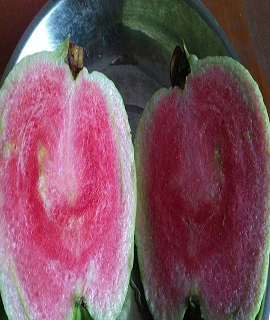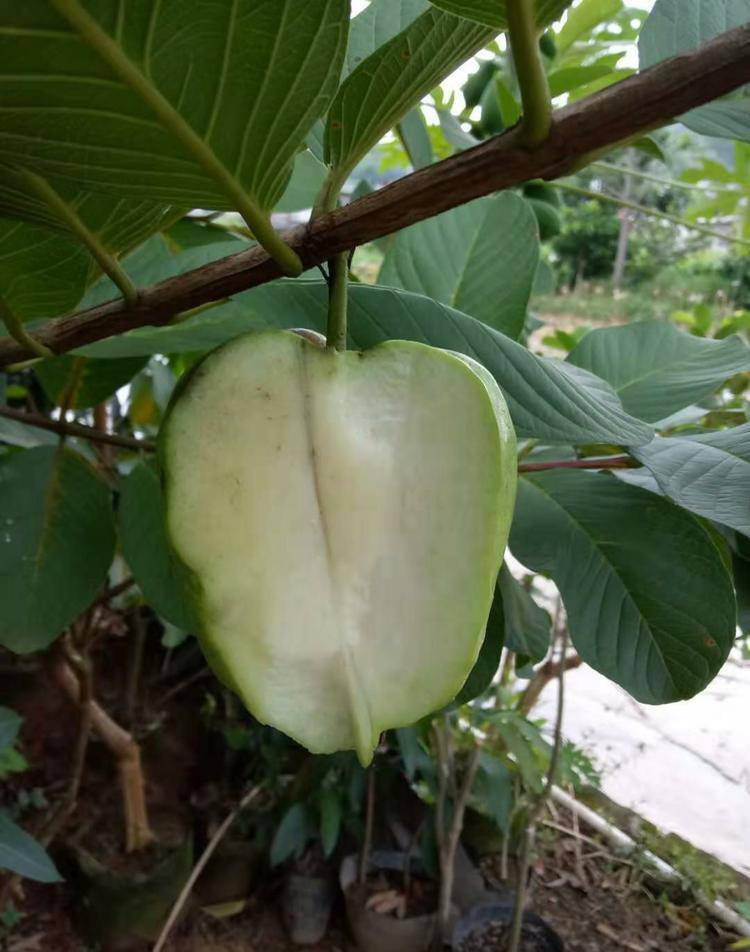Scientific classification
- Scientific Name: Psidium Guajava Linn.
- English Name: Guava,Common Guava,Yellow Guava,Lemon Guava,Apple Guava,Mpera(Kiswahili),Mubera (Kikuyu),Mmupeera(Luganda)
- Family: Myrtaceae
- Genus: Psidium
- Type: Evergreen Shrub,Evergreen Tree
- Country Of Origin: China
Psidium guajava is a large dicotyledonous shrub, or small evergreen tree,generally 3-10 m high, many branches; stems crooked, bark light to reddish brown, thin, smooth, continuously flaking; root system generally superficial and very extensive, frequently extending well beyond the canopy, there are some deep roots but no distinct taproot.
Suitable for: The guava is a hardy tree that adapts to a wide range of growing conditions. It can stand a wide range of temperatures;the highest yields are recorded at mean temperatures of 23-28 deg.C. In the subtropics quiescent trees withstand light frost and 3.5-6 months (depending on the cultivar) of mean temperatures above 16 deg.C suffice for flowering and fruiting. It fruits at altitudes up to 1 500 m and survives up to 2 000 m. Guava is more drought-resistant than most tropical fruit crops. For maximum production in the tropics, however it requires rainfall distributed over the year. If fruit ripens during a very wet period it loses flavour and may split.
Uses:Psidium guajava is grown for its fruit which upon ripening, the guava becomes soft and juicy. It may be eaten fresh, made into a juice or nectar contain fruit pulp, or made into preserves, jam, jelly, or paste. Guava is an excellent source of C vitamin. Its wood can be used to make poles, fenceposts and tool handles, in handicrafts and for charcoal and firewood.It is also becoming a popular bonsai species and is currently quite popular in India and Eastern Asia.



